Branding is said to be complex, but in reality its about the opposite.
It’s about simplification, not complication and brand architecture and the branded house strategy is just one example of how brands can simplify.
The structure of a brand and it’s portfolio of brands, is often a point of complexity both internal and externally.
In this article we’re going to break down some of the best branded house examples so you can learn how some of the biggest and best simplify their brands with structure and brand architecture.
What is a Branded House?
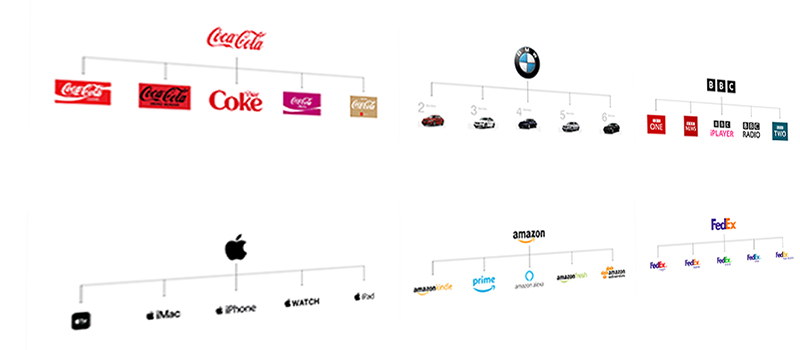
In a nutshell, a branded house is a brand architecture model where one parent brand (the master brand) oversees and influences all sub-brands.
The parent brand is the face of all offerings, no matter how diverse they are.
Here, the corporate brand takes center stage, and the sub-brands essentially borrow the parent brand's reputation.
Branded House Definition

To put it simply, a branded house is a company that uses its name and reputation across a portfolio of brands.
Ultimately, the strategy aims to leverage the positive reputation that the parent brand has in the market to support the sub-brands.
PRO Brand Strategy BluePrint
Build Brands Like A Pro Brand Strategist

Why is Branded House Important?
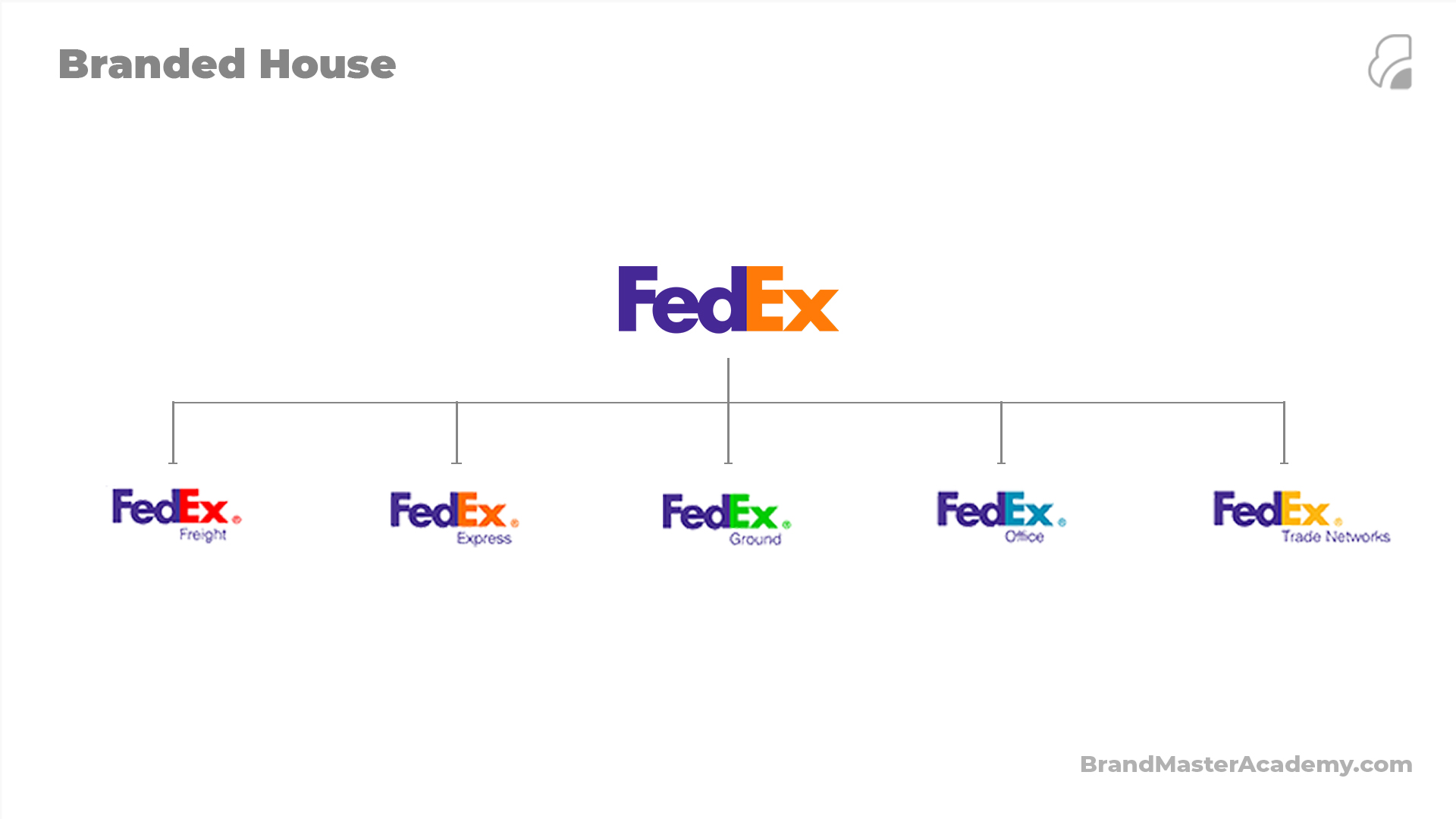
The branded house strategy is crucial because it's an effective way to build a strong brand portfolio.
By using brand architecture models focusing on one main brand, companies can strengthen their brand identity, increase brand loyalty, and promote all offerings under a single name.
This model simplifies marketing strategies and helps create a cohesive brand image.
Explore Brand Strategy
Programs & Tools
Pros of Branded House

Here are some of the advantages of the branded house approach:
Consistent Brand Image: With the parent brand in charge, the image stays consistent across all sub-brands, providing a uniform experience for customers.
Cost-Efficient: Marketing and advertising costs are significantly reduced as all products/services are promoted under one master brand.
Brand Equity: The parent brand's reputation boosts all sub-brands, leading to increased trust and loyalty among customers.
Simplified Decision Making: With a unified identity, customers can easily associate any sub-brand with the parent brand's values and quality, simplifying their decision-making process.
Cons of Branded House

Every coin has two sides, and the branded house model is no exception. Here are a few potential downsides:
Risk of Negative Impact: If the master brand faces a crisis or negative publicity, all sub-brands can be affected due to their association with the parent brand.
Limited Flexibility: It can be challenging to cater to diverse audiences or venture into new markets as all products/services are tied to one single brand identity.
Reduced Customization: The sub-brands might not be able to tailor their marketing strategies and operations to their specific target audiences.
5 Characteristics of a Branded House

When it comes to identifying a branded house, look out for these five key characteristics:
Shared Identity: The parent brand and sub-brands share the same visual identity (logo, color palette, etc.), voice, and values.
Strong Parent Brand: The master brand holds the most significance and all the marketing strategy and efforts revolve around it.
Brand Consistency: The parent brand ensures brand consistency across all sub-brands.
Centrality of Parent Brand: All the sub-brands are centered around the parent brand, with it being their main identity.
Leveraging of Parent Brand: Sub-brands leverage the reputation and equity of the parent brand.
Branded House Examples
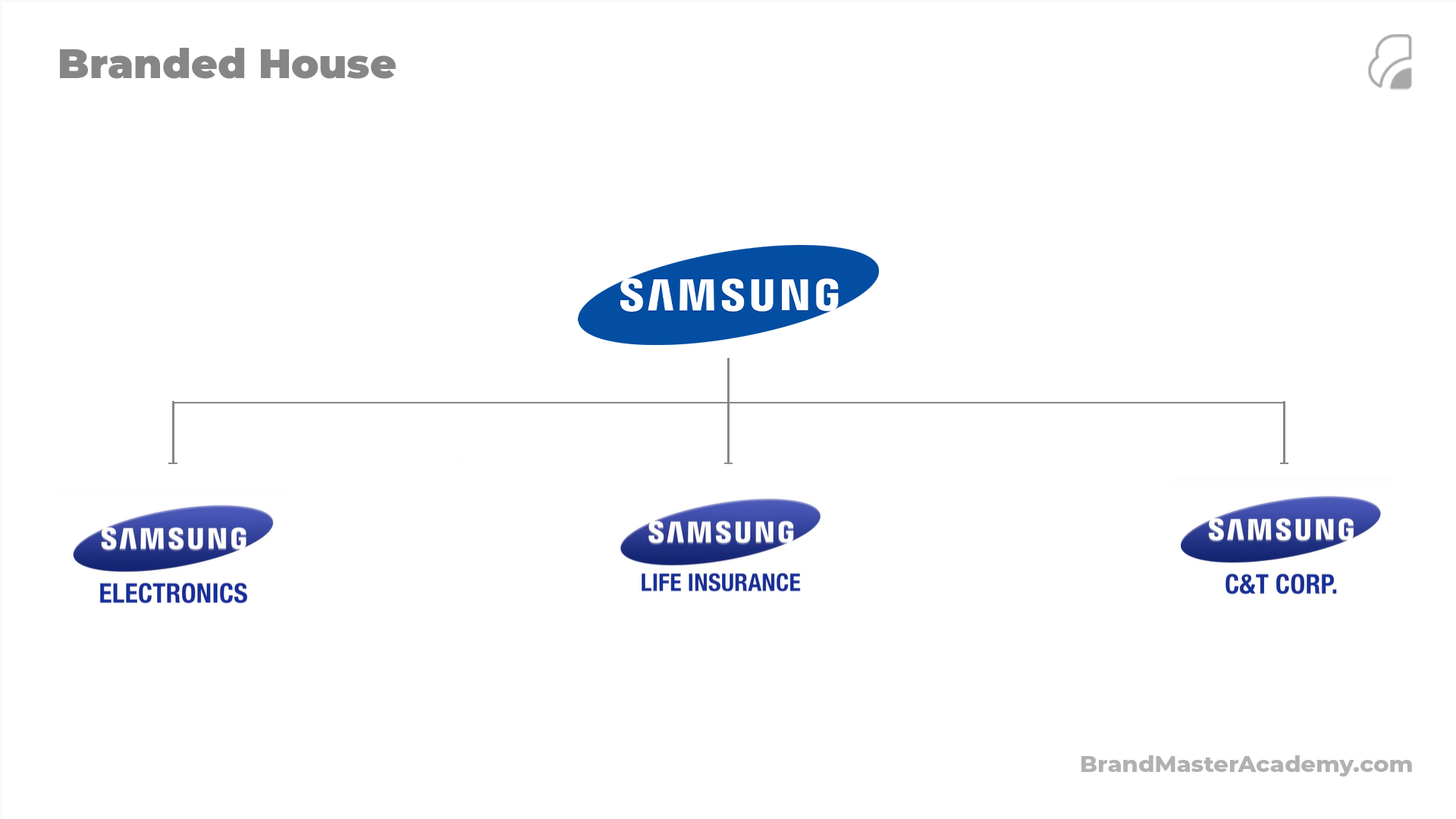
While we'll avoid the usual suspects like Google and Amazon, there are other exciting examples of branded house models.
Samsung is a stellar example of the Branded House Strategy.
While their Electronics, Life Insurance and Construction solutions are all independent entities, they each boast the Samsung brand identity and with it, it's reputation of quality in the market.

Another example is the luxury fashion house, Gucci.
It has diverse products, from fragrances and cosmetics to apparel and accessories.
But everything is sold under the powerful brand name 'Gucci'.
Focus of Branded House
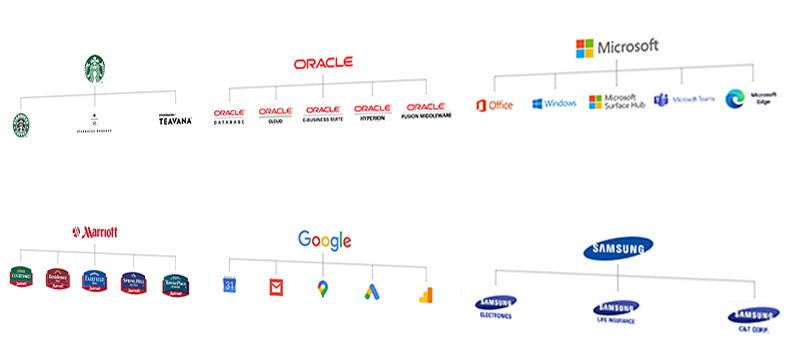
In the branded house architecture, the primary focus remains on building and maintaining a strong brand image for the parent brand.
As all sub-brands leverage the parent brand's reputation, it becomes essential to ensure consistent quality, values, and promises across all offerings.
Marketing of Branded House

The marketing strategies in a branded house structure are primarily focused on the parent brand.
Since the master brand is the primary and own brand identity, marketing efforts aim to enhance the parent brand's reputation, which, in turn, benefits all sub-brands.
Is Branded House Right for You?
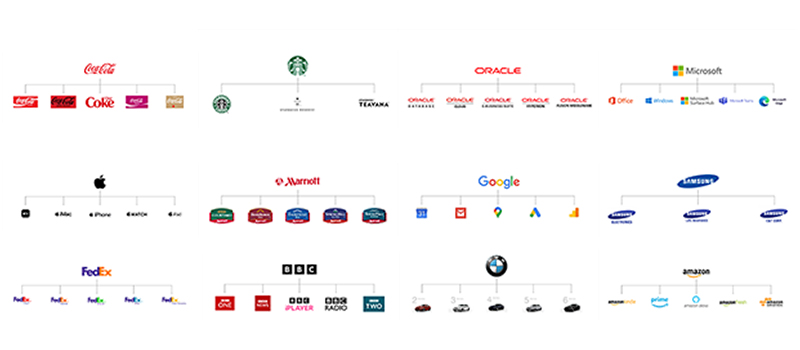
The branded house model might be a good fit if your offerings are closely related or if you want to leverage the reputation of your parent brand to promote your new brands' offerings.
It also works well if you aim for cost-efficient marketing and consistent branding.
How to Apply Branded House The Branded House Strategy

Applying the branded house model to your business requires a strategic approach. Here are a few steps to help you get started:
Identify Your Master Brand: Define the primary brand that will be the face of your company and all its offerings.
Define Your Sub Brands: Outline the various sub-brands that will fall under the umbrella of the master brand.
Ensure Consistency: Make sure that all your sub-brands align with the values, voice, and visual identity of your master brand.
Leverage the Master Brand: Use the reputation of your master brand to boost the visibility and credibility of your sub-brands.
Over To You
The branded house model, while not the only approach to brand architecture, offers its unique set of benefits.
It allows companies to build a strong, unified brand image, reduce marketing costs, and leverage the reputation of the parent brand.
However, it also comes with its share of challenges, such as the risk of negative impact and limited flexibility.
Therefore, it's crucial to carefully consider your company's needs, goals, and market dynamics before choosing this the right brand architecture model.
FAQs
1. What is a branded house example?
Samsung is a stellar example of the Branded House Strategy. While their Electronics, Life Insurance and Construction solutions are all independent entities, they each boast the Samsung brand identity and with it, it's reputation of quality in the market.
2. What is the difference between a branded house and a house of brands?
The branded house model uses one primary brand (master brand) across all offerings, whereas the house of brands architecture model maintains individual brands with their unique identities.
3. What is a branded house strategy?
A branded house strategy is a type of a brand architecture strategy where a single parent brand influences all its sub brands, leveraging its reputation across all offerings.
4. What is the difference between a sub brand and a branded house?
A sub brand is a part of the parent company or brand in the branded house model. It shares the parent brand's identity and leverages its reputation. A branded house, on the other hand, is a strategic approach where all sub brands operate under the umbrella of one parent brand.
5. What is an example of a branded house and a house of brands?
SpaceX is an example of a branded house, with all its programs operating under the parent brand. Procter & Gamble, on the other hand, is an example of a house of brands, where each brand (like Tide, Pampers, and Gillette) has its unique identity and target market across multiple brands.
On-Demand Digital Program
Brand Master Secrets
Make the transition from hired-gun to highly valued brand strategist in less than 30 days. The systems, frameworks and tools inside this comprehensive program are all you need to level up.







